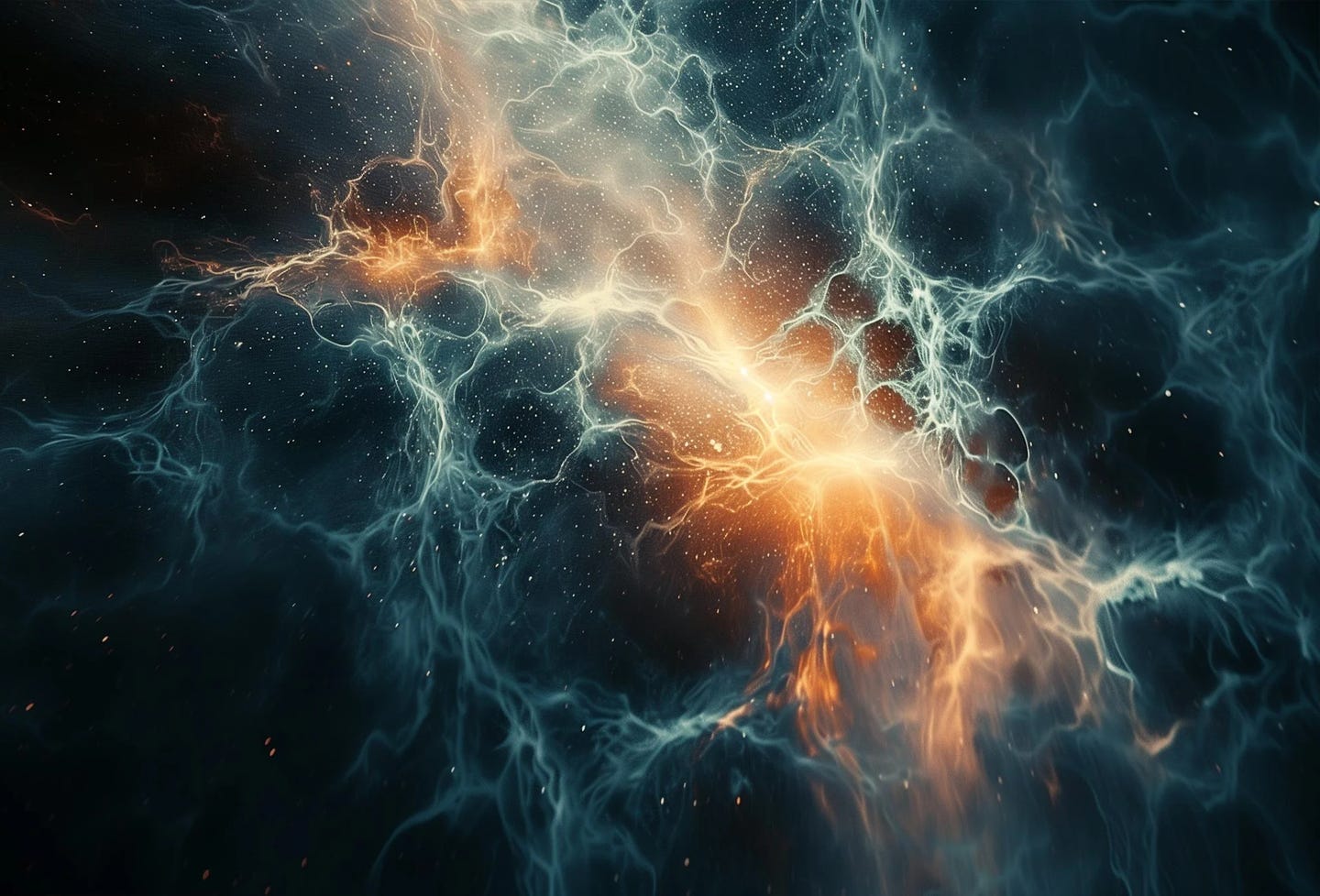Profound new findings could redefine our understanding of dark matter and gravity
This discovery not only challenges dark matter’s role, but compels us to explore alternative theories of gravit

In a groundbreaking discovery with far-reaching implications, researchers at Case Western Reserve University have unveiled new evidence that could revolutionize our understanding of the universe. Their findings challenge the existence of dark matter, a mysterious substance long thought to be crucial for explaining galactic structures.
The research, led by Dr. Tobias Mistele, a postdoctoral scholar in astronomy, employed a novel technique utilizing gravitational lensing – a phenomenon predicted by Einstein's general relativity. Gravitational lensing occurs when massive objects, like galaxies, bend the path of light traveling from distant sources. This bending reveals the warping of spacetime caused by the object's mass.
Mistele's analysis focused on the rotation curves of galaxies, which map the speed at which stars orbit the galactic center. Traditionally, Newtonian gravity dictates that stars on a galaxy's outskirts should move slower due to weaker gravitational pull. However, observations consistently show stars maintaining surprisingly high speeds, defying expectations.


This anomaly led scientists to postulate the existence of dark matter – an invisible, massive substance surrounding galaxies, exerting the additional gravitational pull needed to explain observed stellar speeds.
Mistele's groundbreaking twist lies in his discovery that galactic rotation curves remain surprisingly flat – constant speeds even millions of light-years from the center. This contradicts the expected behavior of dark matter halos, which should have a finite extent, leading to a decline in rotational speeds further out.
"This finding throws a wrench into existing models," explains Mistele. "It suggests either dark matter halos are much larger than previously thought, or our understanding of gravity needs a fundamental reevaluation."
Related Stories
Professor Stacy McGaugh, Director of the Astronomy Department, emphasizes the profound implications of the research. "This discovery not only challenges dark matter's role, but compels us to explore alternative theories of gravity," she says, "potentially rewriting the very foundation of modern astrophysics."
Einstein's theory, although immensely successful, might not hold the whole story. Mistele leveraged the bending of light by galaxies to study the Tully-Fisher relation, a well-established correlation between a galaxy's visible mass and its rotation speed.
"We knew this relationship existed," says Mistele, "but it wasn't clear if it would hold true over vast distances. How far out does this behavior persist? That's the key question, because it can't hold forever."
Mistele's discovery underscores the need for further investigation and collaboration within the scientific community, potentially involving the analysis of additional datasets.
Professor McGaugh highlights the ongoing international efforts to detect dark matter particles directly, which have so far proven unsuccessful. "This could mean dark matter halos are much larger than expected, or the entire paradigm is wrong," she suggests.
An alternative explanation lies in Modified Newtonian Dynamics (MOND), a theory proposed by Moti Milgrom in 1983 as a challenger to dark matter. MOND posits a modification of gravity's laws on galactic scales.
"The most straightforward, but undoubtedly controversial, interpretation of our results is that dark matter might be a misconception," says McGaugh. "Perhaps the evidence points towards a new theory of gravity, one that goes beyond Einstein's framework."
The Case Western Reserve study has ignited a firestorm of debate within the scientific community. The question of dark matter's existence, once considered settled, now hangs in the balance.
What is Dark Matter?
Dark matter and dark energy are two distinct but mysterious components of the universe, with different properties and roles:
Dark Matter:
Dark matter is a form of matter that does not emit, absorb, or reflect electromagnetic radiation, making it invisible and undetectable through conventional means.
It interacts with ordinary matter and other dark matter only through gravity, which means it does not form atoms and molecules like ordinary matter does.
It was first hypothesized to explain the gravitational effects observed in galaxies and galaxy clusters that cannot be accounted for by the visible matter alone.
Dark matter plays a crucial role in the formation and structure of galaxies and galaxy clusters, as its gravitational influence binds them together.
While its exact nature remains unknown, various candidates for dark matter have been proposed, including weakly interacting massive particles (WIMPs), axions, and sterile neutrinos.
Further research and analysis are crucial to determine whether we need to fundamentally reshape our understanding of the cosmos, embracing a universe governed by principles beyond our current comprehension.
Note: Materials provided above by The Brighter Side of News. Content may be edited for style and length.
Like these kind of feel good stories? Get the Brighter Side of News' newsletter.
Joshua Shavit
Science & Technology Writer | AI and Robotics Reporter
Joshua Shavit is a Los Angeles-based science and technology writer with a passion for exploring the breakthroughs shaping the future. As a contributor to The Brighter Side of News, he focuses on positive and transformative advancements in AI, technology, physics, engineering, robotics and space science. Joshua is currently working towards a Bachelor of Science in Business Administration at the University of California, Berkeley. He combines his academic background with a talent for storytelling, making complex scientific discoveries engaging and accessible. His work highlights the innovators behind the ideas, bringing readers closer to the people driving progress.
